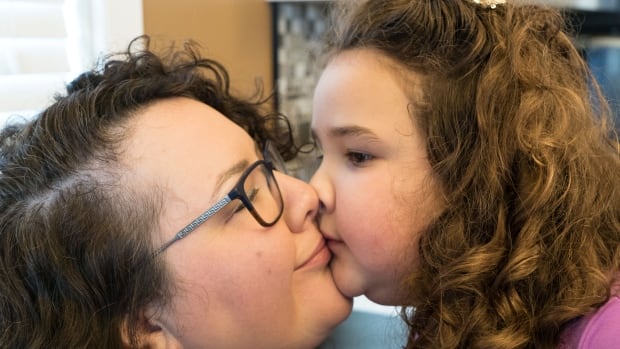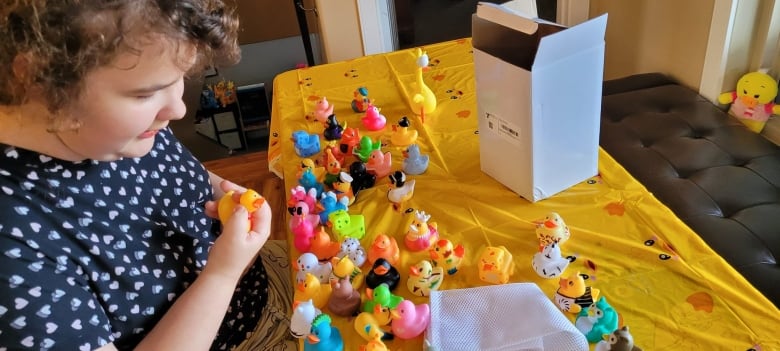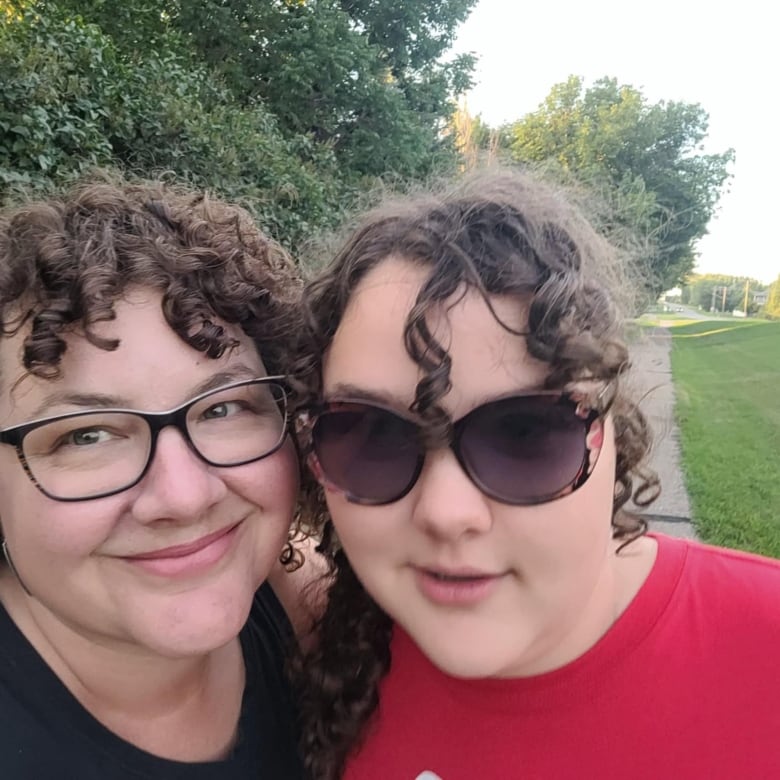
This First Person column is the experience of Amanda Marcotte, who lives in White City, Sask. For more information about CBC’s First Person stories, please see the FAQ.
I watched my 13-year-old daughter blow out the candles on her cake, marvelling as she made the tiniest little “hoo.”
I had made her 48 yellow chocolate ducks for this happy “bird” day celebrations, because she loves birds and especially ducks.
While blowing out candles might not be something you would think is amazing, it’s something many girls who share the same condition as her — Rett syndrome — cannot do.

I drank in her smile, her tiny “hoo” and her clapping, even though there’s something I’ve not been able to put out of my mind for her entire birthday week.
Rett syndrome is a severe neurological disease that most commonly affects girls. It’s caused by a one-letter typo in my daughter’s DNA — one letter out of 3 billion. That means a single protein is made incorrectly. This protein is used in 400 known functions, including neural connectivity.
On the same week of my daughter’s birthday celebrations, a new drug to treat this disease was approved for use in Canada.
In the coming months, once a lot of federal and provincial paperwork is done and the drug is actually available to patients, I have a decision to make. Do I put my daughter on a drug that reduces brain inflammation and might improve her quality of life but could also bring side effects and many unknowns?

My daughter has some words but can’t functionally talk or hold a pencil to write. She can’t take care of her own hygiene needs. She can walk but as the years go by, her joints become more bent and stressed. Every part of her body is affected in some way by Rett syndrome.
Many girls affected by this disease have no words and cannot use their hands, while some can’t chew and swallow food so have feeding tubes. As many as 90 per cent of these girls have seizures while others have different health problems.
Despite these hardships, they are complete, whole people with thoughts and different personalities.
Planning her birthday felt surreal. I was doing mom things — crafting chocolate ducks, trying to find bird decorations and ordering a giant plush goose — while also reading clinical trial medical articles and contemplating whether I’m going to put my daughter on a life-altering drug.
Drug holds promise
The promise of the drug tears at me.
I reached out to the mother of one teenager who took part in the clinical trial in the U.S. The girl started saying “Mom” after never speaking a word in her life. She stopped having to wear splints that prevented her from mouthing her hands raw, slept through the night and in general appeared more alert.
When I listened to a panel of parents organized by the International Rett Syndrome Foundation, I learned another 17-year-old started being able to hug her mother — something that’s not possible for most people with Rett syndrome. This person could walk, but jerkily and still needed a wheelchair for transportation. Now she can walk on a treadmill 20 minutes a day.
These things might seem small but in the Rett world, these small steps are giant leaps.
But there’s always a catch, isn’t there?

Diarrhea, one of the side effects, is a threat to the health of some girls, especially because of dehydration. The girl who could say “mom” had to stop the clinical trial because of this side effect and she returned to not being able to speak. Her alertness and hand-wringing returned to pre-drug levels. Her mother said it was a gut punch. But they waited and waited for the drug to be approved in the U.S.
Now, they are working on adjusting the dose to avoid side effects. Not only can she say “mom” once again, but at one point she said to her father, “Dad, hurry up!”
Reading these stories reminds me of my daughter. The girls with Rett syndrome have a toughness to endure what their bodies and minds go through, because there is no other choice.
I think these girls are heroes for taking part in clinical trials that push the horizons of science, explorers as surely as if they’d set foot on the moon, trying to combat an overwhelming disease.
A few years ago, medications like this were science fiction. Now faced with scientific fact, there is a chorus of “What if? What if?” in my mind. What if the drug causes my daughter pain? What if the side effects are unmanageable? What if it interacts with the heavy-duty medications she’s on right now? What if the cost won’t be covered?
And then there’s the good what ifs. What if it helps keep my daughter more mobile and reduces pain in her joints?
What if she’s able to tell us when and where she is hurt?
My daughter is unable to tell us whether she wants to try a new drug or not. So I have to make a decision for her. I must make the decision for the right reasons. It must be based on what makes her quality of life better and not what is more convenient for me, pulls at our heartstrings or is socially acceptable.
It’s about her dignity, not ours.
The weight of these decisions, the hope and the fear swirl in my mind, and I know many other Rett parents across Canada are in the same boat. But I try to push the thoughts back until the day comes in which we can actually get the drug.
I want the mundane and beautiful Happy “Bird” Day celebrations to take the forefront right now. When she blows out those candles I want the heat of these decisions extinguished for the moment, too. We’ll not think about the unknown future right now but celebrate her as she is today and what she will be everyday — our much-loved girl.
Do you have a compelling personal story that can bring understanding or help others? We want to hear from you. Here’s more info on how to pitch to us.